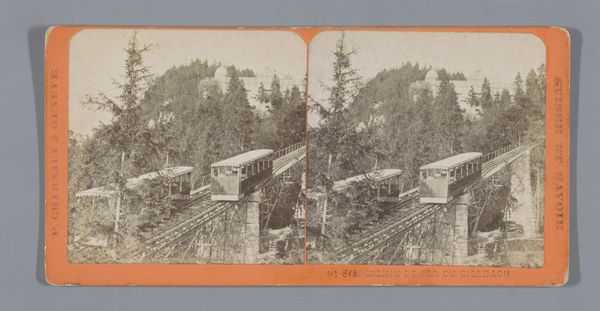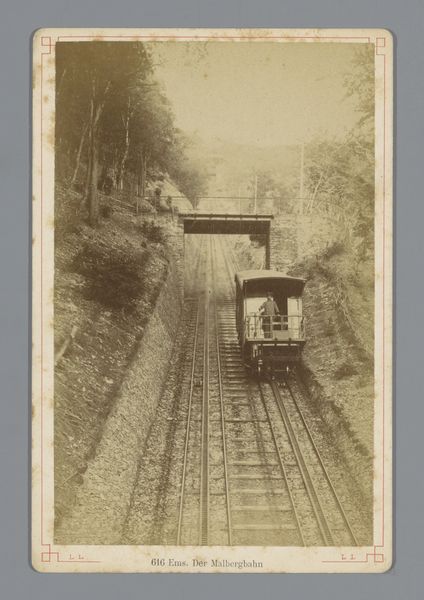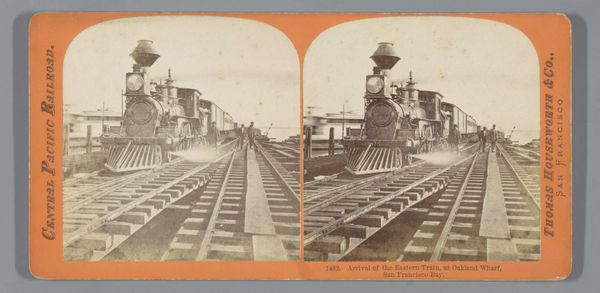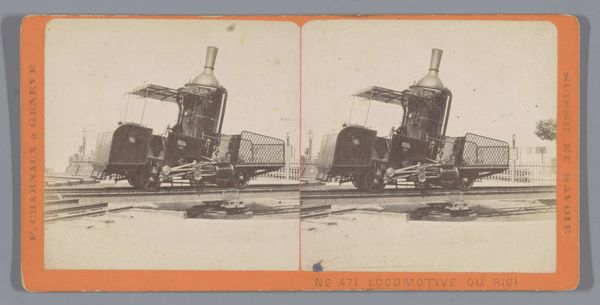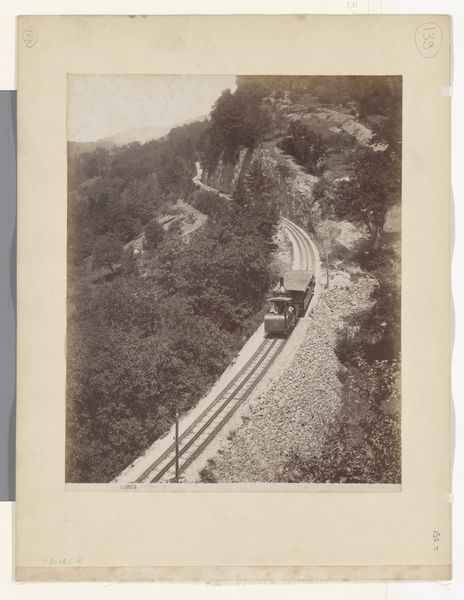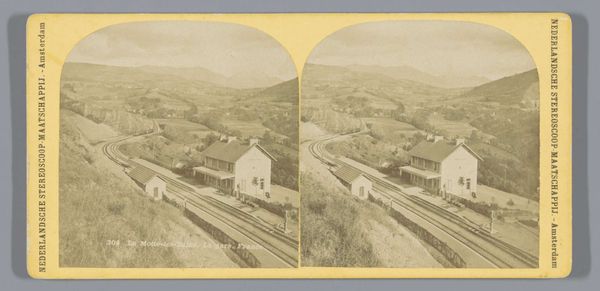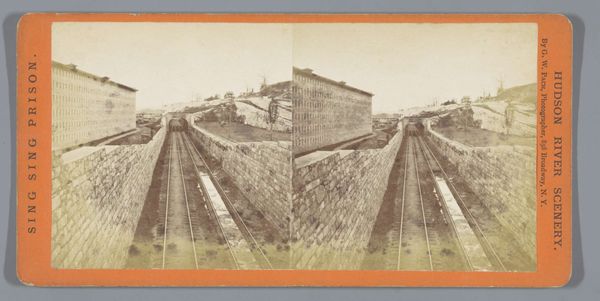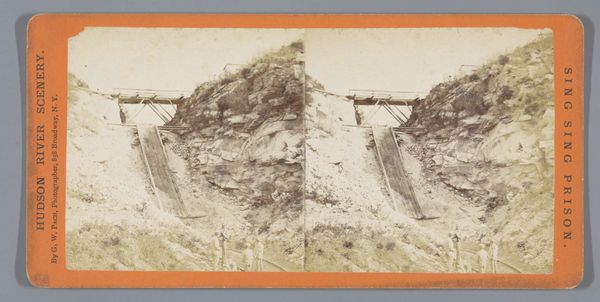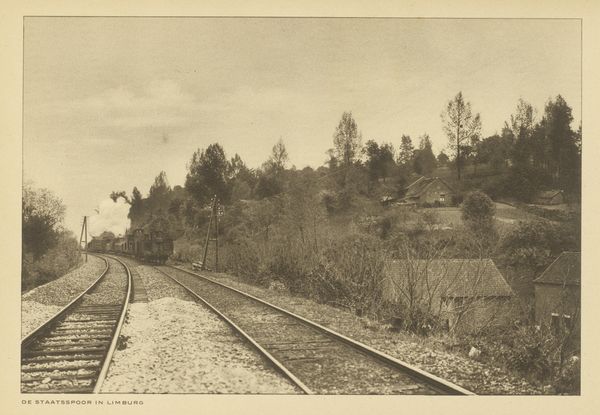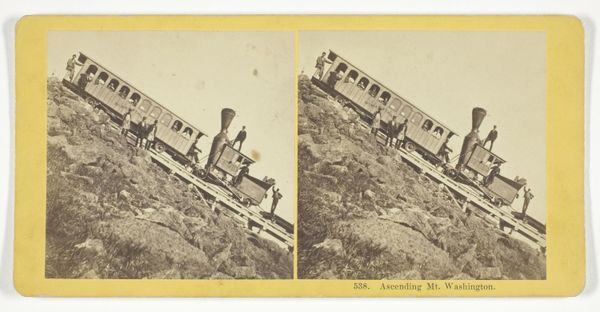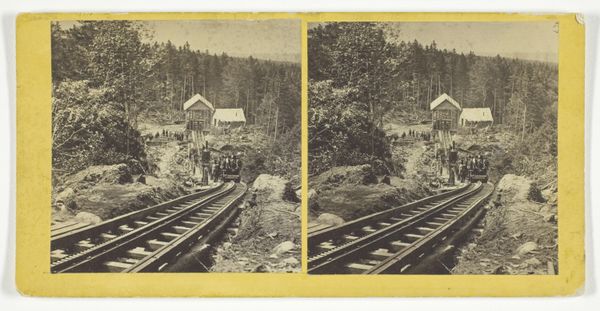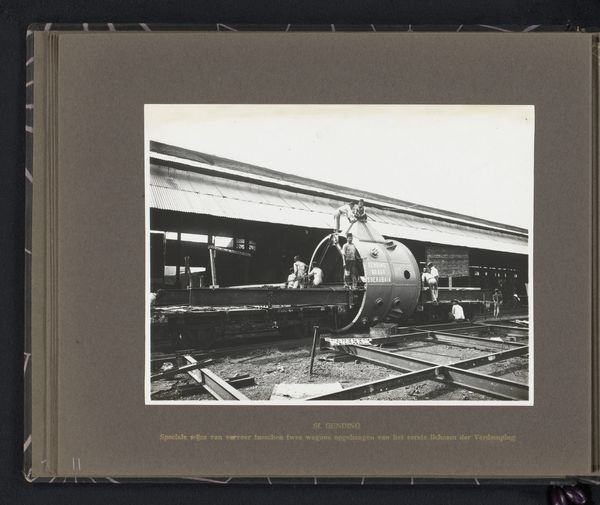
print, photography
# print
#
landscape
#
photography
#
coloured pencil
#
cityscape
#
realism
Dimensions: height 85 mm, width 170 mm
Copyright: Rijks Museum: Open Domain
Curator: This is a stereoscopic print by Florentin Charnaux, created after 1873, titled "Spoorlijn op de Rigi, met op de voorgrond een trein," or "Railway on the Rigi, with a train in the foreground." Editor: The overwhelming impression is one of ascent—the steeply angled tracks immediately grab the eye and pull you upwards. Curator: Indeed. This photograph, captured not long after the railway's completion, speaks to the burgeoning culture of tourism in the Swiss Alps and reflects a societal shift towards accessible leisure for the burgeoning middle class. The railway itself embodies this accessibility—a triumph of engineering allowing previously unimaginable access. Editor: Structurally, I'm struck by how the converging lines of the railway dominate the composition, almost dissecting the natural landscape behind it. The strong diagonal thrust upwards creates dynamism and then tension as you look toward the vanishing point and wonder if that train car will actually manage that bend. The two sides being so close together in a stereoscopic format serve to intensify the perspective effect and really draws the viewer into the scene. Curator: Absolutely. And the very presence of these figures walking along the tracks signifies a changed relationship to the mountain itself. What was once a challenging climb, a test of physical endurance, is now a site of observation and spectacle. This raises questions about our own interactions with nature, as commodified for tourists; where is the indigenous view point, if any? Editor: From a purely visual standpoint, there's something pleasing about the stark contrast between the rigid, geometric lines of the railway and the organic forms of the trees and surrounding terrain. The sepia tones lend the image a nostalgic quality, inviting us to consider how landscapes are perceived and transformed through human intervention. Curator: Thinking about this moment in time and those people on the platform, one cannot overlook the way this photograph speaks to shifting social stratifications. Access to nature becomes linked with capitalist enterprise, transforming the landscape and dictating who has a right to it. We're faced with this ever-present dynamic: accessibility versus authenticity, the individual versus commercialization, and nature versus infrastructure. Editor: This image reminds me that looking at a single composition opens our eyes to numerous points, whether sociohistorical circumstances or material visual perspectives. Curator: Yes, looking closely unveils new avenues to examine both then and now.
Comments
No comments
Be the first to comment and join the conversation on the ultimate creative platform.
